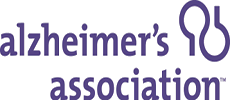INTRODUCTION
The care of Alzheimer Disease (AD) patients will change radically in the next few years. At present, drugs that by contrasting the accumulation of amyloid (the toxic substance held to be responsible for disease), may significantly delay autonomy loss are at an advanced testing stage. Diagnostic procedures able to detect the disease in its early stage, when the patient is still self-sufficient and with a good quality of life, are therefore of critical relevance. It has recently been shown that early diagnosis is feasible through sophisticated imaging exams able to detect some disease's markers.
An acknowledged marker for the Alzheimer's disease is the atrophy of the hippocampus, a structure belonging to the medial temporal lobe. The volume of this structure can be measured in vivo through manual outlining Magnetic Resonance (MR) images by an expert tracer. Unfortunately, these imaging exams are now performed only in research laboratories and following heterogeneous procedures. Different anatomical boundaries result in different estimates across laboratories worldwide, thus preventing the comparison of different studies and the transfer of the marker to the clinical practice for the diagnosis.
Aim of this project, that involves the major international specialists of hippocampal tracing in AD, is to harmonize the available protocols for the manual tracing of the hippocampus in order to create a standard and shared protocol. This protocol will allow to promote the dissemination of this advanced diagnostic tool to a broader patient base.
Project Coordinator: Marina Boccardi
Contact: gfrisoni@fatebenefratelli.it
